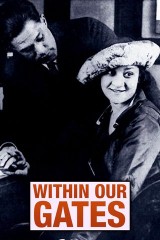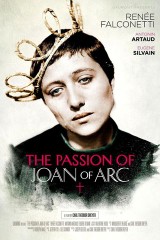TAGGED AS: Classic Film, TCM, WarnerMedia

(Photo by TCM)
Launched in 1994, Turner Classic Movies has become the premier destination for classic film lovers. But in the 25-year history of the channel, it has yet to employ an African-American host to introduce the films (a signature feature of films curated on the channel). That is, until Jacqueline Stewart was introduced as the new host of Silent Sunday Nights — a series that concentrates on the silent film era — during which the author and archivist will introduce films and provide historical context. Stewart is also a professor in the Department of Cinema and Media Studies at the University of Chicago, specializing in the history of African-American cinema. We recently sat down with Jacqueline — or Professor Stewart, as her twitter handle affectionately reads — and she graciously gave us a mini-film lecture as she broke down her Five Favorite Films, including a few newly unearthed gems that exemplify why she is such a welcome addition to TCM.

Because that’s what I’ve got on my mind, at the top of the list is an Oscar Micheaux film. Oscar Micheaux was just a legendary figure, especially among African-Americans. And fortunately, because we’ve been able to recover his silent films, he now has a place in general film history. Within Our Gates, like many of his films, really deliberately and explicitly takes up questions of racial politics in America. The film is about a woman named Sylvia Landry (Evelyn Preer) who is a teacher and she goes up north to try to raise money for this small black school, the Piney Woods School, which was an actual full black school that still exists. We experience what she does in terms of the feeling of isolation that many people who moved from the south to the north felt. She’s escaping a really traumatic family history of violence in the south. The film represents lynching and the attempted rape of black women. Micheaux was just really out there in terms of showing the ugliest aspects of racism in America. He had very clear ideas about the way forward and how education uplifts the right living. These are the things that he felt were keys to black success. He’s a filmmaker whose films still spark really powerful debates today.
Amazingly, this film had been lost for decades, and it was found in an archive in Spain. It had been there for decades. It was a title that just wasn’t recognizable to scholars who know Micheaux’s work. In the 1990s, the film was repatriated to the United States and restored. The inner titles had to be translated back from Spanish into English. In addition, it’s just the visual and the narrative power of film itself. It’s a real lesson for us to work hard to try to recover these lost works.
Favorite moment from the film?
Oh, my gosh. There is a scene where there’s this black preacher, Old Ned. He’s preaching a sermon and he’s pretending he’s talking to the black congregation, but really he’s giving a sermon that the white leaders in the town will approve of. Micheaux was really critical of African-American preachers who did not have the best interests of the race at heart. He gives this really bombastic sermon and then the white town fathers come in and congratulate him on doing his job to keep everybody in line and he’s bowing and scraping to them. Then we get this moment when he steps outside and he’s smiling and nodding and then his face just becomes distraught and you see that he recognizes that he’s putting on a show that is really damaging his people, that he’s just caught in this trap of being disempowered and not being able to be a true leader. It’s a moment that really gives you pause. It really gets me to think about the problems of black leadership that persist, even to this day.

The next one is a Carl Theodor Dreyer film, The Passion of Joan of Arc, which is just an astounding film. Another film that is so powerful in its representation of human emotions. The film traces the trial of Joan of Arc, but it does so in a way that really gets us to focus on the ways that she’s processing this experience and transcends it through her feeling of connection to God. The lead actress in the film, Maria Falconetti, delivers a performance that… I don’t think anyone has ever delivered a stronger cinematic performance than this one. Dreyer is relentless in his closeups on her; I think 95% of the shots of her are in closeup. The nuances of facial expression that she manages to perform in itself, to give us a sense of all these things that she is feeling that you can’t really say out loud, absolutely remarkable. He does lots of other things in terms of really candid camera angles and disorienting kind of editing patterns that make us feel what her consciousness is experiencing. It’s just one of the classics of world cinema.
The next one is a Soviet film, Man with a Movie Camera, made by Dziga Vertov and, I hasten to add, his wife Elizaveta Svilova. She was his creative partner. She edited the film. She appears in the film. They both do. Same with the cameraman. Just the sequence where we see her editing and then see the results of the editing process. It’s a film.
It’s a movie about making a movie. How meta.
Yeah. Right. It’s about, like, what’s the role of the camera in modern life? It opens with the cameraman setting up the tripod and then we go on this journey. Actually, it’s like a city symphony film, which was a popular genre at the time, where you get a portrait of the life of the city across the day from sunrise to dark, but actually Vertov gives us shots of four different entities. But his editing, her editing process, they get combined into one synthetic city, but it becomes more of a meditation on the dynamics of urban life, experiences of workers, of mechanization. They used a variety of, at the time, really innovative camera techniques, so there are freeze frames and slow motion and fast motion and there are multiple exposures and tracking shots.
It was a film that is constantly, as you just said, reminding us that it’s a film and it’s really encouraging audiences to think about how it is that this new medium is really reflecting the new seed of modern life and also how they’re experiencing their sense of life through interactions with the film. It is just really remarkable work. We see her hand cutting and slicing stuff together. We never think about the editor’s work when we’re watching a film and I suppose we think if it’s done well, we’re not aware of it, right? But in this case, we’ve seen across the film a bunch of different kinds of workers, factories, and so on and then we get to see the work of making the thing that we’re actually watching. It’s really significant that we see a woman doing that work because many, many of the most important film editors have been women. That’s an aspect I think of film production that’s been lost. Maybe one of the reasons we’re not aware of editing is because, for a long time, it was women’s work and just wasn’t valued in the same way that we think about the work of the director.

The title is like an artificial title, but it’s Bert Williams, Lime Kiln Club Field Day. It’s actually a film that was never completed. MoMA found it in its vault in reels of production from 1913 featuring Bert Williams, who was the most important entertainer of his era. He’s the first crossover African-American star. He was a recording artist, Vaudeville performer, and he made a number of films with the Biograph company. Some shorter ones survived, but this was a longer production. Fortunately, MoMA discovered his material. They actually put together a cut of it, so that we get a sense of the story.
Bert Williams plays this kind of town comic idea, down on his luck a lot of the time, and he and two other guys who are much more sophisticated are competing for the top affection of the local beauty. It’s a lot of comic sequences where they’re trying to take each other out of the running. The film features all of the most important black theatrical performers of the day. It’s just been a revelation to see this, because now we get to see the performance styles of these figures that up ’til now, we’ve only had still images of them and, maybe in some cases, some of the scenarios that they performed in. It’s incredible.
Do you know how they found it?
It had been in their vault since the ’30s actually. Then, a few decades later, another archivist there did a little bit more research on it. But fortunately, there’s been such an astounding growth of interest in scholarship on early African-American cinema that I think the staff there now, the archivists there, recognize that there was a real public need and desire to learn more about this particular film. I know that the curator there, Ron Magliozzi, worked so hard on recovering the names of the performers. It took deep historical research to do this. He’s traveled around the country and around the world with the assembly that they fit together, and MoMA will be releasing it on DVD I believe next year.
The last one I think might be the most unusual one and this is footage shot by Zora Neale Hurston, who we know as a writer, a novelist, the author of Their Eyes were Watching God (the basis for the eponymous film), which is her best-known work. [She] was also a playwright, short story writer, and screenwriter for a while in her career. Really a Renaissance woman. When she was a student, she was studying anthropology with France Boulez at Columbia, and she was doing her fieldwork as an anthropologist on the kinds of communities that she grew up in, in Florida. In the late 1920s, she had a car and a 16-millimeter camera and she drove down to Alabama and Florida and she shot footage, ethnographic footage, as a part of her research. We featured some of this material on the Pioneers of African-American Cinema box set that I co-curated that was released by Kino.
The footage is not narrative and it’s not exactly documentary either, in the sense that she never put together a work that then she was sharing with other people — it was for her research purposes. But she shows men who are logging, for example. My favorite passage of the footage was when she shows children playing games. The can game, and games when they’re in a circle or square and trading off movement and those kinds of things. We can see she’s capturing information that she’s going to use to talk about these cultural practices in her academic writing. It’s also really clear in the attention she pays the children and the attention that she pays to the movements of women, the way that she captures, even in the silent films, the rhythm and the musicality of church service. We can see visually the style that she’s developing that then she folds into her writing practice. We can say, because we know about this work that Zora Neale Hurston seems to be one of the first African-American women filmmakers, and so it gives us a deeper sense of her creative practice and her intellectual practice as well.
Jacqueline Coley for Rotten Tomatoes: How did you get involved with TCM? Tell us about the process.
Jacqueline Stewart: Sure. I mentioned this Kino box set. Two summers ago, I think the summer of 2017, I was invited to present some of the films from the Pioneers of African-American Cinema Kino Box set on TCM. When I arrived, I learned that I would be talking about the film with Ben Mankiewicz, and they were devoting two Sunday nights to show a range of these films that were made for African-American audiences during the first half of the 20th century. It was really thrilling that TCM was going to be showing this work that most of his audiences would not have been familiar with, and yet this is a really rich and robust film production, film culture, that was coexisting with the classic films that TCM focuses on. These are the films that were showing in segregated black theaters.
I was really thrilled to find when I sat down with Ben that he was really interested to dig into these films and the cultural histories and the political histories that they represent. The conversation went really well on camera. Off-camera, we were talking exactly the same way, and we were just really getting into the different directors and stars. I think, on both sides, TCM and I were really happy with how that went, and we stayed in touch. They invited me to event films at their last couple of classic film festivals in Hollywood, and then the invitation to join the team as a host came from there.
You had your first Sunday night not that long ago. What was that moment like, watching yourself on screen?
I was really nervous. I think anybody would be nervous who hasn’t done that kind of TV work before. I think that I was even more nervous because I just feel a real sense of responsibility. This is an opportunity for me that is not just about expanding my own audience or the next phase of my own career, but it’s a really important moment to demonstrate that expertise about film exists in all of our communities. I know that there is an African American audience that is really rooting for me and want to see that I’m bringing the expertise and the unique perspective that I have to discuss the work that we’re presenting there. I feel a real privilege and an honor and a responsibility to be true to those values. So that also makes it feel like the stakes can be higher for some of us in some of these situations, you know?
When did you first fall in love with classic film, or film in general?
Well, that’s really easy; [it was] when I was a kid. When I was a girl, I spent a lot of time with my auntie Connie, and she loved these classic Hollywood films, and every night we’d watch Johnny Carson. I’m dating myself. [laughs] Then we’d watch, like, The Tomorrow Show, and then there was always a movie that came on TV, and we would stay up well past midnight watching these old movies, and since this was not a TCM presentation of the films, there were commercial breaks. During the commercials is when she would really break these things down for me and talk about various actors and themes. Just her enthusiasm about all of that. I don’t know if watching them by myself if they would have been compelling to me, but it was something about the interest that she had in it and her desire to teach me something, not just looking at the films themselves, but how this film is connected to a whole bunch more. It was almost like when you are learning about the constellations of stars in the sky and somebody points out to you, “Oh, there’s the Big Dipper. There’s the Little Dipper.” She made it possible for me to see all these kinds of systems at play, and so when I had the opportunity to study film history as an undergrad at Stanford, and then I think about graduate school. I do think, like, on a lower frequency, even though film studies was not like a huge part of my undergraduate education — I was an English major — but I became really curious about film and thought, “Oh, maybe you can write about films and how they’re made, how they tell stories in much the same way that you would talk about novels.” That’s what I’ve continued to do over all these years.
Jacqueline Stewart is currently hosting Slient Sunday Nights every Sunday night on TCM.